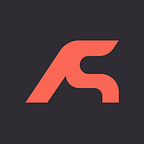Case Study: Building FarmRaise’s Legacy App
About FarmRaise
Co-founded by Jayce Hafner and Sami Tellatin, FarmRaise is an app that helps farmers find and apply for funding easily and quickly. After working in everything from agribusiness to their own family farms, the FarmRaise team saw how many farms lacked resources to improve their infrastructure, soil health, water and energy efficiency, and biodiversity — even though USDA funding was available to them. They decided to simplify the process.
The app makes it easy for farmers to not just determine what grants they’re eligible for, but to apply for them as well. After filling out a 2-minute eligibility quiz, farmers are matched with grants and programs that they are a good fit for. Then, through the app, they can directly apply to all the eligible grants by filling out the necessary information, avoiding tedious paperwork.
Defining the Project
When they were starting out, FarmRaise didn’t have developers or technical staff on their team, but they needed to prove out the solution and take it to market. They came to Amplified to help them build the first version of the app. FarmRaise essentially needed an eligibility engine that would match users with grants, a dashboard for farmers to create accounts and fill out their information, and an automated backend. Our goal was to simplify the application process by auto-filling PDFs with the applicant’s information.
The Project
The entire project took about 5 months, from May to September 2020. The team touched base with Jayce and Sami every week through Zoom, and also used email for specific questions that came up. They also made use of Figma to define the design and user interface altogether.
Amplified assigned 5 team members to the FarmRaise project, including two fully dedicated developers, one part-time tech lead, one part-time designer, and one part-time project manager, Maria. “Her influence was invaluable,” Sami expressed. “She was organized, and would always send us a summary, notes, and to-do list after a meeting. She was great at following up.” Meanwhile, Madalin led the technical side of the project. “I felt confident that he would come to me if there was a decision to make,” Sami said, “and even more, that he would guide me through the decision.”
Technical Challenges
The biggest issue we faced with this project was making the app accessible to its target users. The farmers that FarmRaise wanted to help most likely had old phones, outdated laptops, and slow internet speed, but they had to be able to access the dashboard and apply for grants with their current equipment. To make that possible, we needed a lightweight app that would behave decently at low speeds.
To manage this, we decided to build the app with Svelte.
Why Svelte?
Svelte is a compiler and component framework similar to React or Vue that uses HTML and Javascript. Svelte brought many benefits that were exactly what we needed:
- The bundle size in Svelte is smaller than other frameworks. Essentially, Svelte compiles code at build time instead of run time, which speeds up the app considerably.
- Svelte works with small components, so we had to create small, super dynamic components for every button, image, etc.
- The benefit of Svelte is that it allows you to write code that updates the DOM directly, as opposed to using virtual DOM diffing, as React does. Knowing how variables are linked, Svelte has the ability to update them, and all others that depend on them, directly in the DOM.
Svelte was a new framework for our team, so we learned as we were building. However, we found that it was the ideal option for FarmRaise’s target users, as it really did create a fast-loading and fast-running application.
Other Challenges
The project presented a couple of other challenges for our team. It was our first time building a dynamic form builder. We also had to read all the application forms that farmers would normally have to fill out individually to acquaint ourselves with each one and build all of the necessary fields — a time-consuming task that was unique to this project, but that we of course took on for our client.
Outcomes
The app was a huge success for us and, more importantly, for the FarmRaise team. It validated their idea, allowed them to raise another round of funding, set a solid foundation to reach their goal of signing up 500 farmers, and enabled them to hire an in-house engineering team.
With their in-house team and more funding, FarmRaise eventually upgraded the app. However, our legacy app continued to work during this transition, serving farmers while the in-house team worked on the new version.
